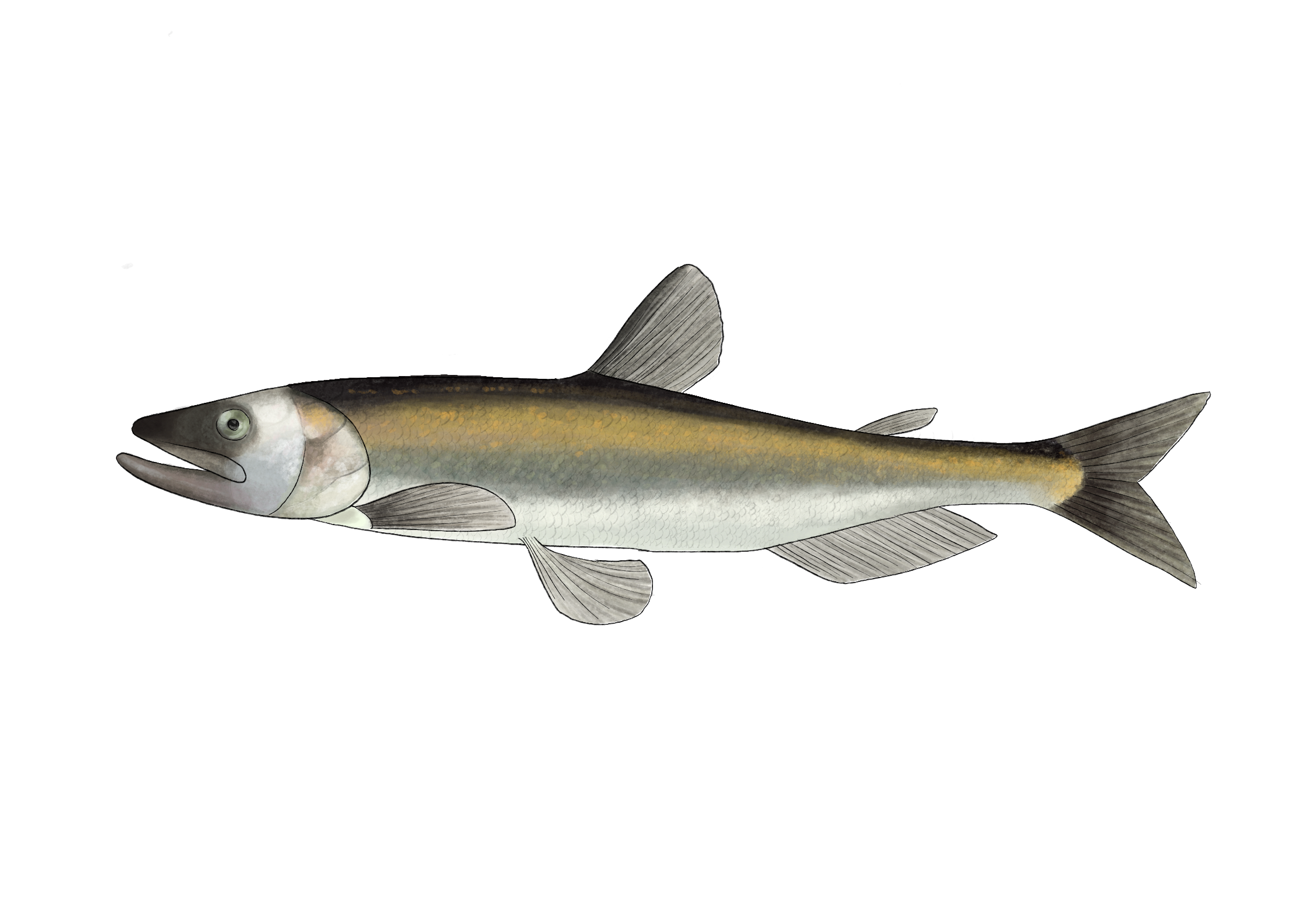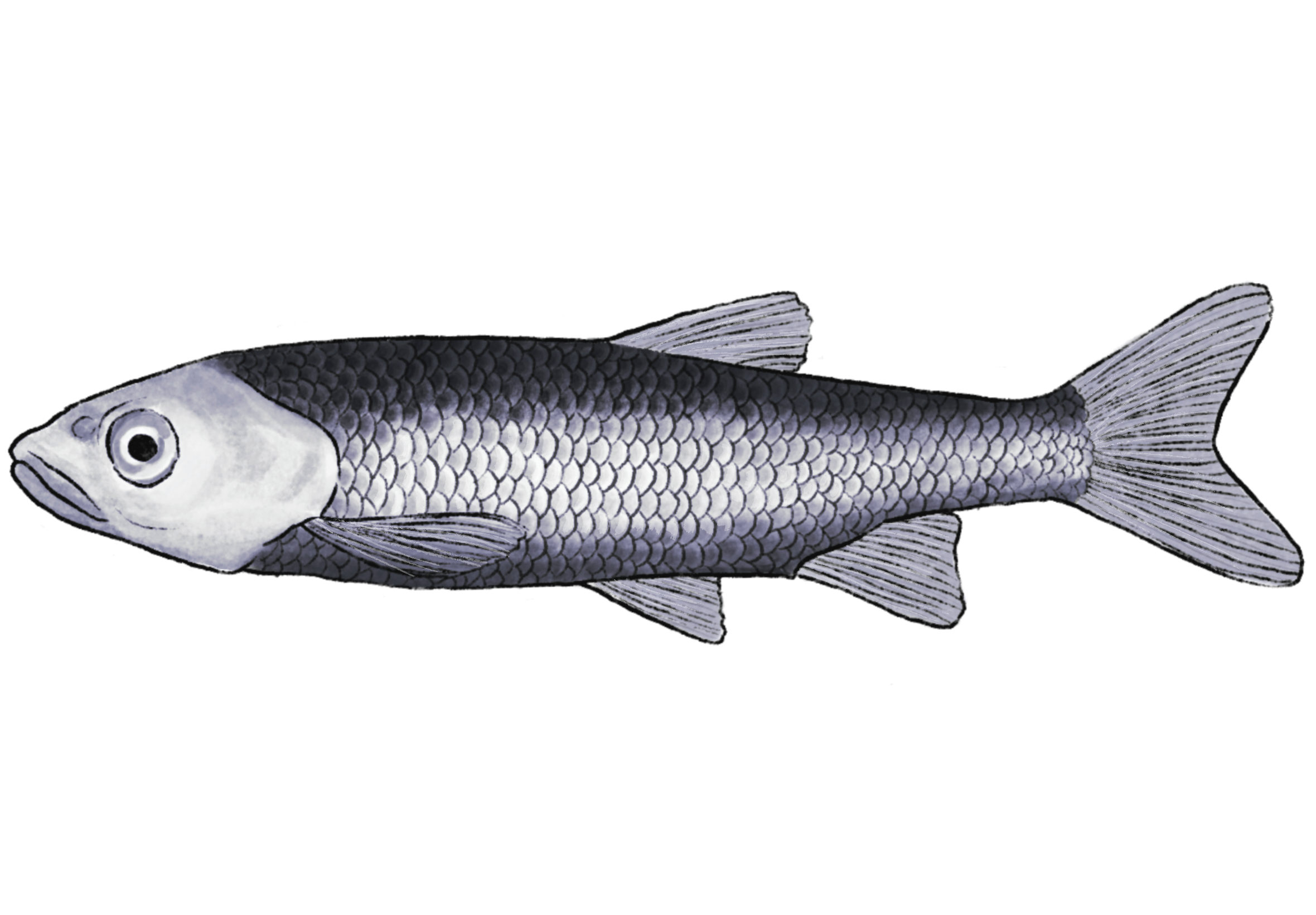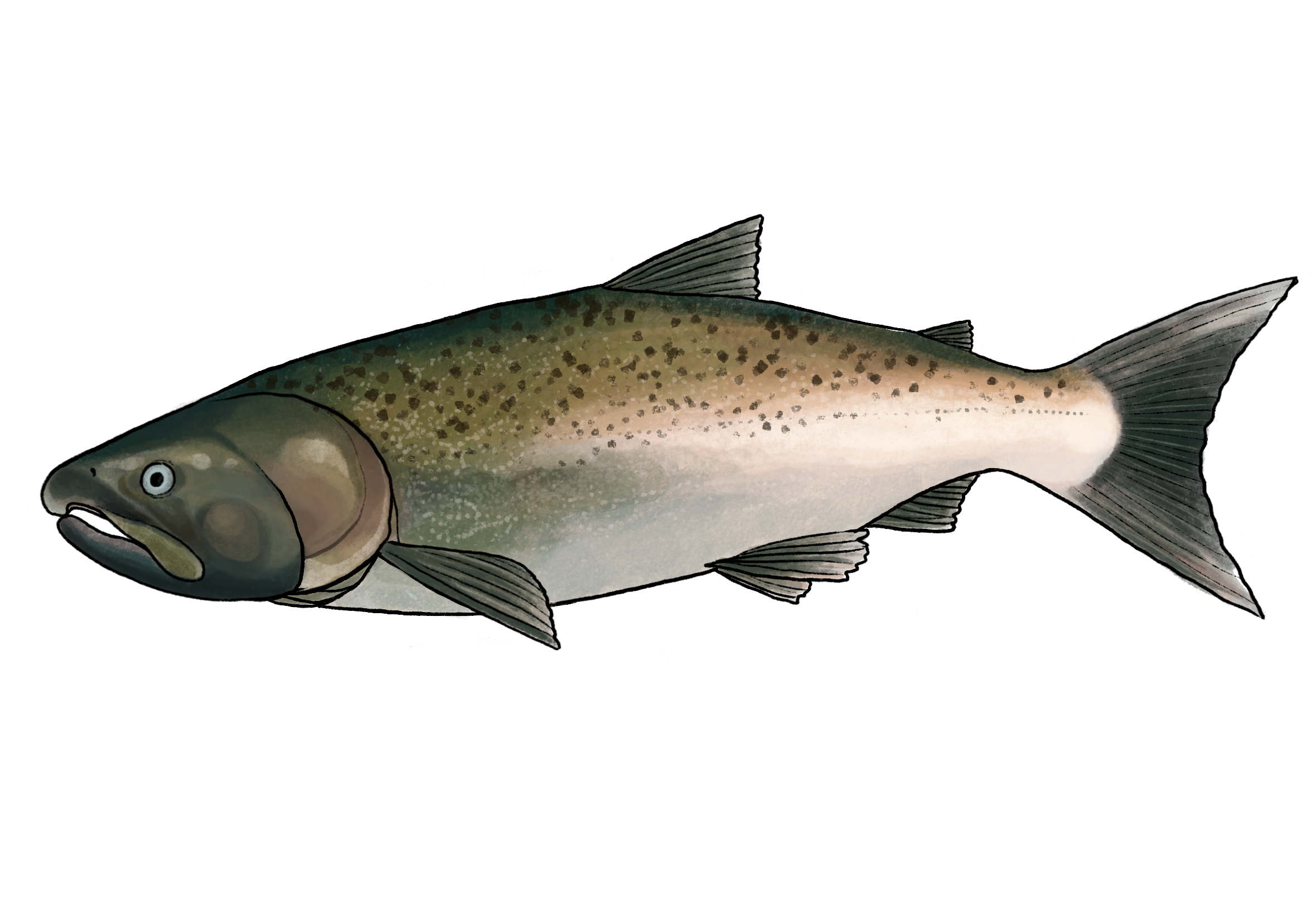wood stake fish weirs of the oregon coast
By Scott Byram
Ancestral Connections & Geographic Extent Temporal Extent Biophysical Manipulations Target Species Ceremony & Stewardship Current Status
Hundreds of vertical wooden stakes comprise this large tide flat weir on the southern Oregon coast. This structure is the remains of what may be many generations of fish harvesting in one of the largest Oregon coast estuaries - Photo by Scott Byram
Chief Donald Ivy - Photo by Scott Byram
In Memory of Chief Donald Ivy, Coquille Indian Tribe
Ancestral Connections & Geographic Extent
Wood stake fishing weir sites occur in numerous estuary intertidal settings along the Oregon coast. Archaeologists and tribal cultural heritage specialists have documented over 3,000 years of tidal weir use at over 100 sites. Decades after the first wet site archaeology revealed unusual assemblages and remarkable preservation, many archaeologists still view wet sites as rare troves of well-preserved organics. But thanks to tribal and university collaborations in recent decades, we now realize that wet sites are among the most numerous traditional sites preserved on the Oregon coast. Intertidal weirs clearly are not camps or villages, but with canoe catchment, numerous weir sites were accessible from well-populated village sites along estuary shores. The name Oregon itself is thought to come from the word ooligan (Thaleichthys pacificus) in Chinuk Wawa (recorded as Ourigan in 18th century interviews with Western Cree traders), representing the great value of fisheries to people from the coast and across the Rockies (Byram and Lewis 2001). The Ooligan Grease Trails are well known travel corridors that inland tribes followed for hundreds of miles to trade for fish grease after the earliest spring runs. Ooligan was a prominent component of Northwest Coast potlatch ceremonies that redistributed much of the great wealth of coastal community leaders.
Expansive tidal flats were the setting for broad, arced tide flat weirs - Photo by Scott Byram
Wood stake weirs were used in estuaries well to the north of Oregon, but their southern extent is not clear (Erlandson et al. 1998). South of the Coquille River in Oregon and on the northern coast of California, tectonic uplift does not allow for large estuary formation. Where there are exceptions, tidal weirs are known, including Humboldt Bay in California.
Dendritic tidal slough channels that drain during lower low tides were the setting for numerous cross-channel tidal weirs - Photo by Roy Lowe, U.S. Fish and Wildlife Service.
Page 80 in the fieldnotes of University of Colorado anthropologist Gordon Hewes (1940:80), written during interviews with Wiyot elders at Humboldt Bay in northern California. These notes indicate that broad spectrum marine harvests using weirs may have been an important part of traditional subsistence practices in northern California - Image by Scott Byram
Temporal Extent
Wood stake weirs and related woven materials have been dated to over 3,400 years ago in the Coquille River (Moss and Erlandson 1999). The Ahnkuti site in Yaquina Bay has a record of repeated weir building from over 2000 years ago until the 19th century. Extensive radiocarbon dating indicates that weir site preservation and intertidal visibility are a result of Cascadia Subduction Zone seismic uplift and subsidence, and relative sea level change. Most radiocarbon dates of fishing weir wood are from longer interseismic periods, indicating that subaerial exposure due to uplift or subtidal positioning due to subsidence have cloaked what was otherwise a sustaining cultural practice over more than three millennia. Milled wood is a feature element in a small number of Oregon coast weir sites, indicating U.S. period use of some sites as well.
A milled wood V-shaped (cross-channel) tidal fishing weir adjacent to what was an early U.S. reservation period Native community on the central Oregon coast - Photo by Scott Byram
Biophysical Manipulations
A century ago, after extensive interviews with tribal elders on the Oregon coast, University of Washington anthropologist Melville Jacobs came to realize that estuary fisheries had been the foundation of the Native economy until U.S. settlers immigrated. Settler farming, timber extraction and other commercial developments displaced tribal communities, forcing many onto reservations away from their homelands. These reservations were periodically downsized by Congress until little if any land remained available for traditional subsistence practices (Kentta 2012). Yet even in the 1930s the memories of traditional fishing practices were alive, and many tribal members found ways to continue to harvest from what had once been a great abundance in Oregon estuaries. Some of these harvests continue today, though wood stake weirs are rarely used by contemporary Native people.
In Jacobs’ conversations with several tribal elders at Siletz and Coos Bay, he learned that for the Hanis and Miluk people of Coos Bay, “All bay fishing was village-communal; (the fisherman) obtained an excess that would take care of every other household in his village. …(These) public hauls were only of fish that entered the rivers and bay in limitless numbers” (M. Jacobs 1934[96-22]:13-16).
V-shaped (cross-channel) tidal weir at shallow tidal slough channel, central Oregon Coast - Photo by Scott Byram
Testimony from numerous tribal elders depicts fisheries where weirs were the central fish harvesting technique. While large weirs crossing river channels were used seasonally above tidewater, and these were better known to anthropologists, it was the more gracile tidewater weirs that provided sustained harvests throughout the year, including resident fishes as well as those that came in spawning runs in vast numbers (Byram 2002a). The largest villages had been along the shores of these estuaries, accessible to fisheries by canoe, and the rafters of cedar plank houses provided excellent conditions for smoke drying fish, allowing for preservation and preparation for trade inland.
Some fishing weirs are found in ancient wetland sediments underlying riverbank village sites. It has been suggested that the weirs and related lattice panels acted as sediment traps, enhancing riverbank formation while expanding the extent of subsidiary channels and levee-bordered tide flats.
Oregon coast wooden weir stakes are often well preserved. While every effort is made to leave weir stakes in place, over 100 have been sampled for radiocarbon dating and species identification. Over 80% of weir stakes sampled in Oregon are western hemlock (Tsuga heterophylla) (Trieu 2008). This wood is abundant on the coast from northern California to southeast Alaska. Unlike spruce, cedar and other local wood, hemlock has a higher density than saltwater, so embedded stakes do not float into the water column as the tide rises - Photos by Scott Byram
Target Species
Various salmon (Oncorhynchus spp.), herring (Clupea spp.), ooligan (Thaleichthys pacificus), starry flounder (Platichthys stellatus), Pacific tomcod (Microgadus proximus), northern anchovy (Engraulis mordax), various perches and numerous other fishes inhabit Oregon estuaries seasonally or throughout the year. According to Melville Jacobs, of the fish that were consumed in abundance by Native people, “These were two kinds of ‘herring’, a smaller and larger type; several kinds of ‘salmon’, (including) Chinook (Oncorhynchus tshawytscha) and Silverside salmon (Oncorhynchus kisutch), two kinds of sardine (Sardinops sp.), two kinds of ‘smelts’ (Osmeridae spp.), one ‘surf smelts’ (Hypomesus pretiosus), the other so-called ‘Coos Bay smelts’, and a run of so-called ‘he’i-‘k’ fish (probably hake, or Pacific whiting) (M. Jacobs 1934[96-22]:13-16).
As many as twenty different fish species are likely to have been harvested with wood stake weirs in this region (Byram 2002; Harrington 1942). Fish trap lattice panels are primarily smaller mesh (9mm warp spacing), indicating species such as herring and smelt were often targeted (Connolly and Byram 1997).
Ceremony & Stewardship
Salmon ceremonies are practiced annually by Oregon coast tribes. The Coquille Indian Tribe holds an annual salmon ceremony at the shoreline location of wood stake weirs that have provided fish for millennia (Ivy and Byram 2001). The name Coquille (pronounced kokwel) likely comes from the word for Pacific lamprey (Lampetra tridentata), an anadromous fish of great abundance in this region that was widely traded (Byram 2002b).
Places of traditional fisheries practice remain of great importance to Oregon coast tribes, and this has led to many collaborations with federal and state agencies as well as private landowners for site access and preservation. Collaboration with state university researchers has greatly enhanced site research. Tribes that have played a key role include the Coquille Indian Tribe, the Confederated Tribes of Siletz Indians, and the Confederated Tribes of Coos, Lower Umpqua and Siuslaw, and the Confederated Tribes of the Grand Ronde.
Current Status
Fisheries remain of great importance to Oregon coast tribes, but they are greatly diminished due to habitat loss, shoreline encroachment, pollution and even systematic poisoning of species such as Pacific lamprey in the mid-20th century. Many of the archaeological weir sites documented in the past three decades were found during surveys in tribal fishing boats along estuary shores, under the stewardship of Native leaders. Wetland restoration at locations such as the Ni-les’tun Shoreline (USFWS) has greatly enhanced preservation of traditional fisheries sites.
References
Byram, R. S. 2002a. Brush fences and basket traps: The archaeology and ethnohistory of tidewater weir fishing in Oregon estuaries. Ph.D. dissertation, Department of Anthropology, University of Oregon, Eugene.
Byram, S. 2002b. Scoquelle, Coquelle, and Coquille. Pages 121-138 D.B. Ivy and R.S. Byram (eds.) Changing landscapes, sustaining traditions. Coquille Indian Tribe, North Bend, Oregon.
Byram, S., and D. G. Lewis. 2001. Ourigan: wealth of the Northwest Coast. Oregon Historical Quarterly 102:126–157.
Connolly, T., and S. Byram. 1995. Oregon wet site basketry: a review of structural types. Pages 185–204 Albert C. Oetting (ed.) Contributions to the archaeology of Oregon. Association of Oregon Archeologists, Eugene, OR.
Erlandson, J. M., M. A. Tveskov, and R. S. Byram. 1998. The development of maritime adaptations on the southern Northwest Coast of North America. Arctic Anthropology 35:6–22.
Harrington, J. P. 1942. Alsea, Siuslaw, Coos, Southwest Oregon Athapaskan: vocabularies, linguistic notes, ethnographic and historical notes. Pages 58–68 Elaine Mills (ed.) John Peabody Harrington in the Smithsonian Institution 1907-1957 A Guide to the Field Notes: Native American History, Language, and Culture of Alaska/Northwest Coast. National Anthropological Archives, Smithsonian Institution, Washington D.C.
Hewes, G. 1940. Field notes from interviews with Indian people of several Northwest California tribes on the topic of traditional fishing techniques. Bancroft Library, University of California, Berkeley.
Ivy, D. and S. Byram. 2001. Coquille cultural heritage and wetland archaeology. Pages 120-131 Barbara Purdy (ed.) Enduring Records: the Environmental and Cultural Heritage of Wetlands. Oxbow Books, Oxford.
Jacobs, M. 1934. Hanis and Miluk Coosan texts and linguistic and ethnographic data. Melville Jacobs Collection, University of Washington Libraries, Seattle.
Kentta, R. 2012. Our history: the Confederated Tribes of Siletz Indians. https://www.ctsi.nsn.us/introduction/.
Monaco, M.E., R.L. Emmett, D.M. Nelson, and S.A. Hinton. 1990. Distribution and abundance of fishes and invertebrates in west coast estuaries, Volume I: Data summaries. ELMR Rep. No. 4. NOAA/NOS Strategic Environmental Assessments Division, Silver Spring, MD, 232 p.
Moss, M., and J. Erlandson. 2008. Native American archaeological sites of the Oregon coast, the historic context for the nomination to the national register of historic places. Pages 1–36 Tasa, L. Guy and L. O’Neill, Brian (eds.) Dunes, Headlands, Estuaries, and Rivers: Current Archaeological Research on the Oregon Coast. Association of Oregon Archaeologists, Eugene, OR.
Trieu, Ann.2008. Report of wood identification for specimens from Oregon Coast intertidal sites. University of Southern Illinois, Carbondale.
Tveskov, M. A., and J. M. Erlandson. 2003. The Haynes Inlet weirs: estuarine fishing and archaeological site visibility on the southern Cascadia coast. Journal of Archaeological Science 30:1023–1035.
Younker, J. 2002 Survival of a potlatch tradition: Coquille giveaway in the 21st Century. Pages 37-52 D.B. Ivy and R.S. Byram (eds.) Changing landscapes, sustaining traditions. Coquille Indian Tribe, North Bend, Oregon.










